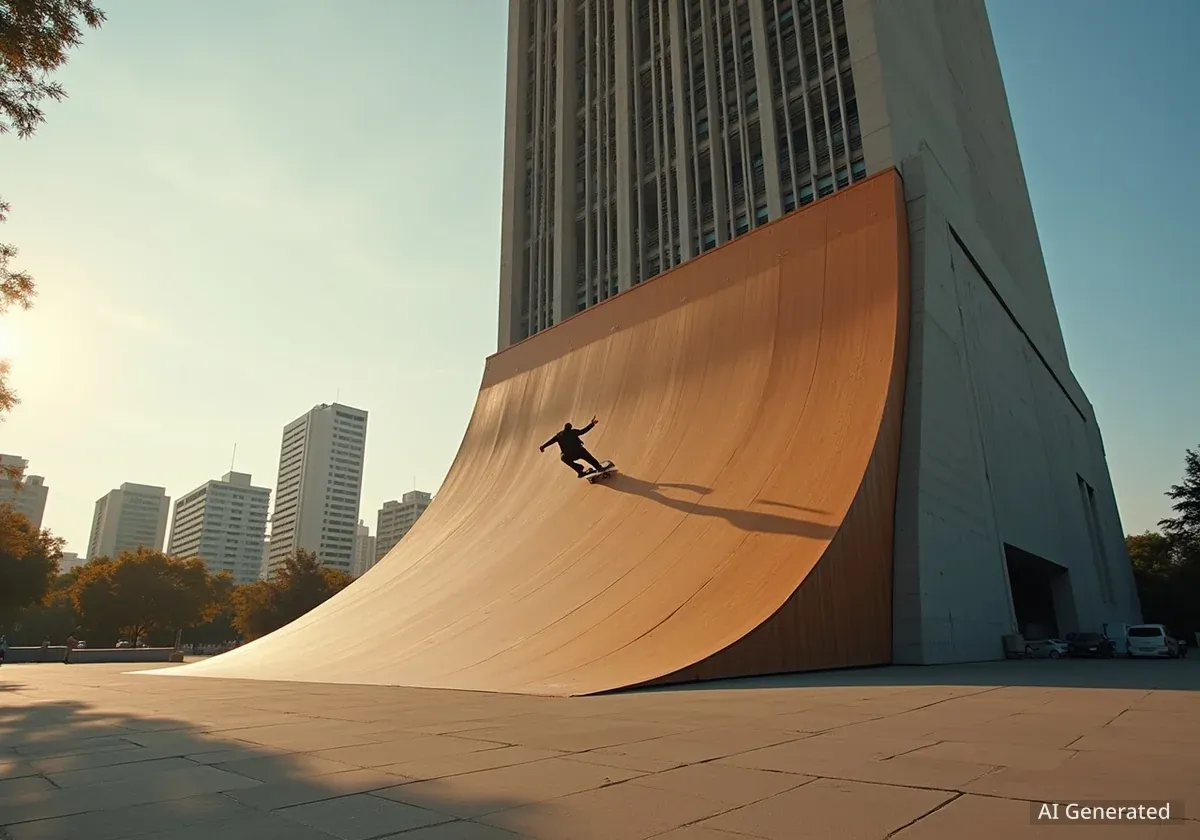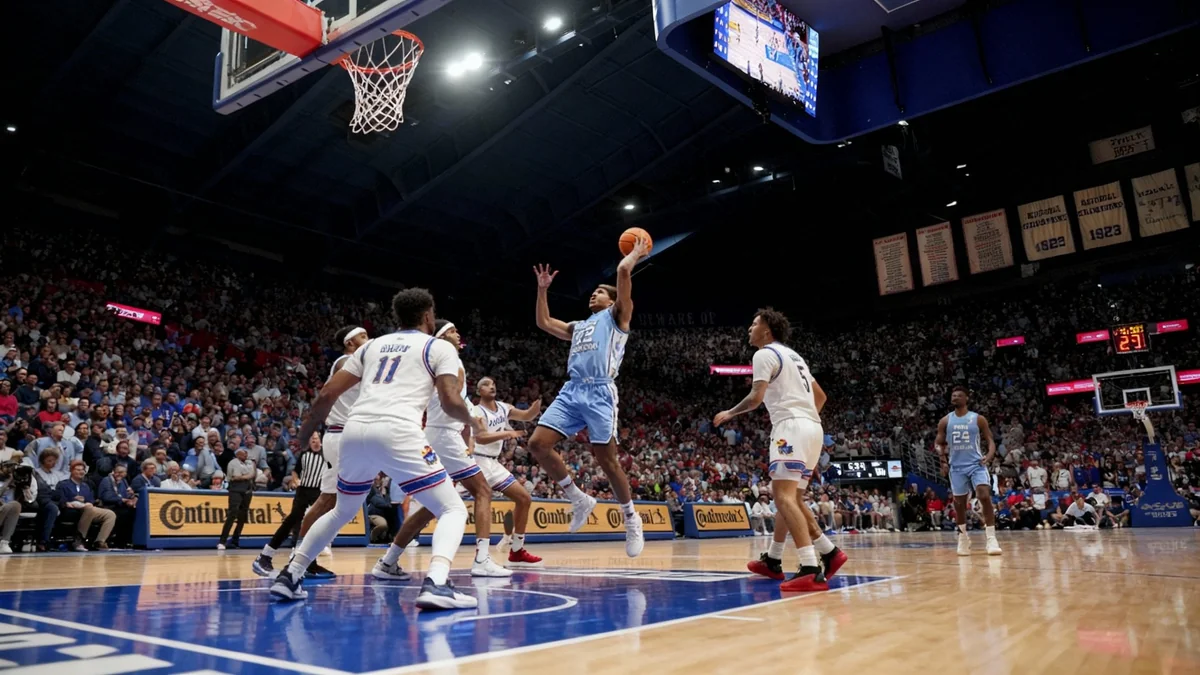A government building in Porto Alegre, Brazil, was recently transformed into the world's largest temporary skate ramp. This unique project was a collaboration between beverage company Red Bull and fashion house Prada Linea Rossa. Skateboarder Sandro Dias achieved a new Guinness World Record during the event, reaching the fastest speed ever recorded on a temporary quarter pipe.
Key Takeaways
- An 88.91-meter-tall building in Porto Alegre, Brazil, was converted into a temporary skate ramp.
- The project was a collaboration between Red Bull and Prada Linea Rossa.
- Skateboarder Sandro Dias set a new Guinness World Record for speed on a temporary quarter pipe.
- The ramp was constructed from plywood panels over a steel structure.
- 115 tonnes of project scrap material will be donated to local NGOs.
Government Building Becomes Record-Breaking Ramp
The Centro Administrativo Fernando Ferrari (CAFF) building, an 88.91-meter-tall structure completed in 1987, served as the site for the Red Bull Building Drop event. This building houses government offices and is home to Porto Alegre's local symphony orchestra. Its distinctive curved exterior made it a suitable, albeit unusual, choice for the extreme sports event.
For decades, the local skateboarding community had considered the building's potential. Red Bull stated that the building had been a "subject of constant speculation" among skaters. The recent transformation brought these long-held dreams to life, creating a unique urban sports spectacle.
Project Facts
- Building Height: 88.91 meters (291.7 feet)
- Ramp Construction Time: One month
- Top Speed Achieved: 103.8 kilometers per hour (64 miles per hour)
- Scrap Material Donated: 115 tonnes
Construction and Design of the Mega Ramp
The temporary ramp was built using plywood panels, a common material for skate ramps. These panels were affixed to the building's exterior via a robust steel structure. This design allowed the ramp to follow the building's natural curve, extending beyond its edge to create an elevated runway for the skateboarder.
According to Red Bull, the building's original concrete surface had become "too cracked and unsafe for riding." The temporary plywood ramp provided a smooth, safe surface for the descent. This addition preserved the building's iconic exterior while enabling the event.
"The establishment was converted into the world's largest ramp for the occasion, enabling Dias to fully utilize the edifice's natural curvature and achieve the highest speed ever recorded in this discipline," Prada stated regarding the project.
Skater Sandro Dias's Record-Breaking Descent
Brazilian skateboarder Sandro Dias, known for his professional career, performed the record-breaking descents. He used various drop-in platforms installed along the ramp's length. These platforms were positioned at 55 meters (180 feet), 60 meters (196 feet), and 65 meters (213 feet).
Dias eventually progressed to the highest platform, located at 70 meters (229 feet). To reach these high-altitude starting points, he was lowered from the building's rooftop multiple times using rappelling equipment. His final attempt from the 229-foot platform resulted in a top speed of 103.8 kilometers per hour (64 miles per hour).
This achievement earned Dias a Guinness World Record for "the fastest speed skateboarding on a temporary quarter pipe." The event also received recognition for "the tallest drop into a temporary quarter pipe" by the organization.
Building History
The Centro Administrativo Fernando Ferrari building was completed in 1987. Its construction was part of a broader government initiative. The design is attributed to "a team of five architects from the then State Department of Public Works," according to the building's official website. The structure has 22 stories and features two mirrored volumes joined at the center, with long, dramatic slopes on their exterior sides.
Collaboration and Environmental Impact
The Red Bull Building Drop event was a collaboration with Prada's Linea Rossa sports collection. Sandro Dias wore apparel from this collection during his descents, highlighting the partnership between the beverage company and the luxury fashion brand.
Beyond the sporting achievement, the project also included an environmental initiative. A total of 115 tonnes of scrap material from the ramp construction are scheduled for donation after the event. This includes 800 wooden boards, which will be given to local non-governmental organizations (NGOs) or repurposed as biomass. This effort aims to minimize the environmental footprint of the temporary installation.
Comparison to Typical Mega Ramps
This temporary installation at the CAFF building was significantly larger than what is typically considered a "mega ramp" in skateboarding. A standard mega ramp usually measures between 60 meters (200 feet) and 108 meters (360 feet) in length, with drop-in heights of 12 meters (40 feet) or more. The 88.91-meter-tall building offered a scale almost four times greater for the drop-in height, pushing the boundaries of what is possible in skateboarding infrastructure.
This project joins other recent creative skateboarding initiatives. These include a Vans store in London with a skateable interior and furniture designs that convert into skating infrastructure. Such projects highlight the ongoing innovation and integration of skateboarding into diverse urban and commercial spaces.




